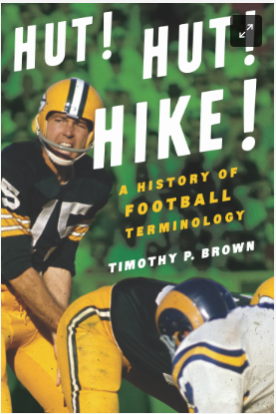George Armstrong Hockey Legend
Orlando Cepeda Champion, Hitting Machine, and Baseball Trailblazer
Early Brilliance and Breaking Barriers (1958-1964):
-Burst onto the scene with the San Francisco Giants in 1958, earning Rookie of the Year honors with a stunning .312 batting average and 25 home runs.
-Became the first Puerto Rican-born player to start in an All-Star Game and hit over 40 home runs in a season (1961), breaking barriers and inspiring future generations.
-Led the league in home runs (46) and RBI (142) in 1961, finishing second in MVP voting and solidifying his status as a dominant force.
World Series Glory and Injury Struggle (1965-1970):
-Captured a World Series championship with the St. Louis Cardinals in 1967, earning MVP honors with a .308 batting average and 4 homers in the Fall Classic.
-His career took a devastating turn in 1965 with a knee injury that hampered his mobility and power.
Continued Excellence and Career Conclusion (1971-1974):
-Demonstrated unwavering resilience, bouncing back from injury and finding success with various teams like the Atlanta Braves and Boston Red Sox.
-Finished his career in 1974 with an impressive .297 batting average, 379 home runs, and 1365 RBI, solidifying his place among baseball's elite hitters.
Born September 17, 1937, in Ponce, Puerto Rico, was Baseball Hall of Fame First Baseman, Orlando Cepeda. This Puerto Rican baseball legend was an eleven-time MLB All-Star; World Series, and National League MVP 1967 wi the St. Louis Cardinals. The NL Rookie of the Year 1958 San Francisco Giants and also later played on the Atlanta Braves.
Roger Clemens The Rocket Arm of Baseball
Jim Rutherford From Goaltender to Architect
Playing Days: Drafted by the Toronto Maple Leafs in 1969, Rutherford played ten seasons in the NHL for four teams. While not setting the world on fire, his experience as a player provided invaluable insight into the athlete's perspective, later informing his decisions as a GM.
The Architect Emerges: Rutherford's transition into management began with the Hershey Bears of the AHL, where he honed his skills and won two Calder Cups. His success caught the eye of the Hartford Whalers, who brought him on as GM in 1987. There, he drafted future Hall-of-Famers like Ron Francis and Ed Belfour, laying the foundation for a competitive team.
Championship Dreams in Carolina: In 1994, Rutherford took the helm of the fledgling Carolina Hurricanes, tasked with building a franchise from scratch. His keen eye for talent led to drafting Eric Lindros and Sergei Brylin, and his savvy trades brought in players like Kevin Dineen and Keith Primeau. In 2002, his vision culminated in a Stanley Cup championship, Carolina's first and only to date.
Turning Tides in Pittsburgh: In 2014 Rutherford joined the Pittsburgh Penguins, inheriting a talented but underperforming team. His bold moves included:
Drafting Sidney Crosby's future linemate.
Jake Guentzel.
Acquiring Evgeni Malkin's perfect complement, Phil Kessel.
The result? Two more Stanley Cup victories, proving his ability to elevate contenders to champions.
Legacy Beyond Trophies: Rutherford's impact extends beyond trophies. He championed analytics and player development, pushing the boundaries of traditional scouting. He is known for his strong leadership, fostering positive team cultures, and building trust with players. Though he retired from full-time management in 2021, his influence on the game continues.
In conclusion, Jim Rutherford's career epitomizes the evolution of the GM role. His ability to identify talent, make strategic trades, and build winning teams has placed him among hockey's most successful general managers. His legacy will be measured in championships, his impact on the game, and the inspiration he provides to aspiring executives.
Dick Duff Hockey Star Left Winger
Early Career and Rising Star (1955-1964):
-Duff began his professional career with the Toronto Maple Leafs in 1955. Despite his size, he possessed exceptional speed, agility, and a knack for finding the net.
-He quickly established himself as a valuable two-way forward, contributing both offensively and defensively. His tireless work ethic and ability to play in all situations earned him the respect of teammates and coaches alike.
Stanley Cup Success and a Blockbuster Trade (1964-1969):
-Duff's impact became undeniable as he played a key role in the Maple Leafs' back-to-back Stanley Cup victories in 1962 and 1963. His offensive production soared, and he was named an All-Star on multiple occasions.
-In a surprising move in 1964, Duff was part of a blockbuster trade that sent him, along with several other Maple Leafs stars, to the Montreal Canadiens. This move proved fruitful for both player and team. Duff seamlessly integrated into the Canadiens' high-powered offense, playing alongside legends like Jean Béliveau and Maurice Richard. He added another Stanley Cup championship to his resume in 1965 and continued to be a reliable offensive contributor for the Canadiens, winning two more Stanley Cups in 1966 and 1968.
Later Career and Legacy (1969-1971):
After a successful stint with the Canadiens, Duff bounced around the NHL, playing for the Los Angeles Kings, Buffalo Sabres, and briefly returning to the Maple Leafs. While his offensive production dipped slightly in his later years, his veteran leadership and work ethic remained valuable assets. He retired in 1971 with a respectable 572 points (283 goals and 289 assists) in 1030 regular-season games, solidifying his place as a consistent scorer throughout his career.
Born February 18, 1936, in Kirkland Lake, Ontario, was Hockey Hall of Fame Left Wing Dick Duff. This legend was a six-time Stanley Cup winner. He skated with the Toronto Maple Leafs, New York Rangers, Buffalo Sabres, Montreal Canadiens, and Los Angeles Kings.
Ron Santo A Chicago Icon and Baseball Legend
Dominating Third Baseman:
-Primarily played third base for the Cubs and briefly for the Chicago White Sox (1974).
-Earned nine All-Star selections throughout his 15-year career, showcasing his consistent excellence.
-Led the National League in total chances every season from 1961 to 1968, a testament to his defensive prowess.
-Set the major league record for most games played at third base in a single season (1965) with 164 games.
Offensive Powerhouse:
-Finished his career with a solid batting average of .277, hitting over 340 home runs and driving in over 1,330 runs.
-Won the National League Player of the Month award three times during his career, highlighting his periods of peak performance.
Chris Webber A Tale of Talent, Controversy, and Unfulfilled Potential
Webber's rise began at the University of Michigan, where he formed a formidable group dubbed the "Fab Five, " alongside Juwan Howard." Leading the Wolverines to two national championship appearances, Webber showcased his all-around prowess. He combined polished low-post moves with a surprising shooting range and a knack for facilitating the offense. However, his iconic timeout call in the 1993 championship game marked the beginning of a contentious relationship with controversy that would follow him throughout his career.
Drafted first overall by the Orlando Magic in 1993, Webber immediately displayed his talent, earning Rookie of the Year honors. However, his desire to trade to a larger market led to a tumultuous first few seasons. Eventually landing with the Sacramento Kings in 1998, Webber found his basketball home. He became a dominant force, averaging over 20 points and ten rebounds consistently and leading the Kings to their most successful stretch in franchise history, including six consecutive playoff appearances.
Webber's career, however, was marred by off-court issues. A college recruiting scandal led to the NCAA vacating Michigan's 1993 national championship, tarnishing his reputation. He also faced criticism for his on-court behavior, including technical fouls and controversial plays.
Despite his talent, Webber never quite reached the pinnacle of NBA success. Injuries hampered his later years, and the Kings, despite their playoff appearances, never managed to break through to the championship round. Webber retired in 2012, leaving behind a legacy of "what if" alongside his undeniable talent and contributions to the game.
Babe Siebert Hockey Hall of Fame S-Line Member
His journey began in Flatbush, Brooklyn, where he carved his name on local rinks before migrating to the Montreal Maroons in 1925. Here, his talent blossomed. A powerful forward with a scoring touch, he helped the Maroons capture the Stanley Cup in his rookie season, becoming a fan favorite known for his rugged play and electrifying rushes.
Siebert wasn't just a gifted goal scorer; he was a tough-as-nails enforcer often suspended for his on-ice brawls. This duality became his trademark, earning him the fear, respect, and discipline. He thrived in the rough-and-tumble hockey of the era, but his physicality often overshadowed his skill.
His career took a surprising turn in 1933 when he was traded to the Boston Bruins. There, coach Art Ross saw hidden potential, converting Siebert into a defenseman. This move unlocked a new level of greatness. His physicality translated seamlessly to the back line, making him a dominant force against opposing forwards.
He blossomed as a blueliner, earning All-Star nods and leading the Bruins to another Stanley Cup in 1939. In 1937, he even received the Hart Trophy as the league's Most Valuable Player, a testament to his newfound defensive prowess.
But the shadow of his past still loomed. Injuries and off-ice issues plagued his later years, and he tragically drowned in 1939 on the eve of his first season as head coach of the Montreal Canadiens.
Babe Siebert remains a controversial figure in hockey history. Undeniably talented, he was also fiercely temperamental and often crossed the line with his physicality. He was a man of contradictions, a champion on the ice but troubled off it.
Warren Spahn A Look at His Baseball Hall of Fame Career
Born April 23, 1921, in Buffalo, New York, was Baseball Hall of Fame Pitcher Warren Spahn. The left-handed Spahn played 21 seasons in Major League Baseball in 1942 and then from 1946 until 1965 (WWII Military service), most notably for the Boston Braves, who became the Milwaukee Braves after the team moved west before the 1953 season.
-Here's a glimpse into his remarkable career:
-Longevity and Domination: Spahn pitched for an incredible 22 seasons, primarily for the Boston and Milwaukee (later Atlanta) Braves. He holds the major league record for most wins by a left-handed pitcher with 363 victories.
-20-Win Seasons Galore: Spahn achieved the coveted feat of winning 20 or more games in a season a staggering 13 times, a testament to his consistency and excellence.
-Cy Young Award and World Series: Spahn's dominance was recognized with a Cy Young Award in 1957. While he never won a World Series title, he did compile a solid 4-3 record in his three World Series appearances.
-Crafty Lefty: Known for his deceptive fastball and exceptional control, Spahn relied more on finesse than overpowering velocity.
-Durability and Late-Career Success: Despite entering the majors at a relatively late age (25), Spahn's dedication to fitness allowed him to pitch effectively well into his 40s. He even won 23 games at the age of 42!
-Post-Playing Career: After retiring in 1965, Spahn remained involved in baseball, serving as a coach and broadcaster.
-Hall of Fame Induction: In 1973, Spahn's undeniable impact on the game was recognized with his induction into the National Baseball Hall of Fame.
Spahn holds the major league record for a left-handed pitcher, with 363 victories from the mound, and has the most by a pitcher who played his entire career in the post-1920 live-ball era. He was a 17-time All-Star who won 20 games or more in 13 seasons and won the Cy Young Award in 1957, along with being a three-time runner-up for the award at a time in baseball when only one was handed out for both Leagues.
Warren Spahn's career stands as a testament to hard work, dedication, and defying expectations. He redefined what it meant to be a successful left-handed pitcher, leaving an indelible mark on the history of the game.
Dave Bancroft And A Look at the Baseball Brilliance
-Beautiful Baseball Journey
Born in 1891, Bancroft's baseball journey was not without its share of challenges. His early years in the minor leagues were marked by struggles, but his unwavering talent and dedication shone through. He made his debut with the Philadelphia Phillies in 1914 and swiftly established himself as an elite defensive player. Unlike the conventional shortstops of the era, Bancroft showcased exceptional agility, range, and a knack for anticipating plays. He revolutionized the position by demonstrating the importance of a strong throwing arm and flawless footwork.
Beyond his defensive prowess, Bancroft was a player of strategic brilliance. He was credited with the innovative idea of 'playing the percentages,' a tactic where he positioned himself based on the batter's tendencies, thereby becoming a cerebral force on the field. He was also a switch-hitter, a rarity at the time, adding another weapon to his offensive arsenal.
-Brilliant and Long MLB Tenure
Bancroft's career spanned an impressive 16 seasons. He played for five different teams, including the legendary New York Giants, a team known for its strong defensive play and strategic approach to the game. Bancroft was a key cog in their World Series victories in 1921 and 1922, contributing with his exceptional defensive skills and consistent batting. While his batting average was solid but not spectacular, his consistency and ability to get on base were valuable assets. He also held the record for most fielding chances by a shortstop for decades, a testament to his defensive brilliance.
-Beyond His On-field Contributions
Bancroft played a significant role in the evolution of baseball. He was quick to embrace advancements like night games and early radio broadcasts, recognizing their potential to expand the sport's reach. Later in his career, he even managed women's professional baseball teams, further demonstrating his passion for the game in all its forms.
Dave Bancroft retired in 1930, leaving a legacy of innovation and excellence. His innovative defensive strategies, such as 'playing the percentages,' and his emphasis on agility and anticipation, have become standard in the game. He was inducted into the National Baseball Hall of Fame in 1971, a fitting tribute to a player who redefined shortstop, embraced change, and left an indelible mark on the game he loved.



.jpg?https://jerseydispatch.com/pfeL/p/c312642c0431e75b485e432232c99c1c/website/Daily-Sports-Uniform-Number-History/February/February-8-Jersey-Numbers/Images/.Basketball_at_Pas-en-Artois,_France,_1918_(20166469838).jpg)
.jpg?https://jerseydispatch.com/pfeL/p/c312642c0431e75b485e432232c99c1c/website/Sports-History-Photo-of-the-Day/February-Images/February-8-Image/images/.640px-Arctic_Sisterhood_Basketball_banner,_Nome_(NOWELL_200).jpg)





